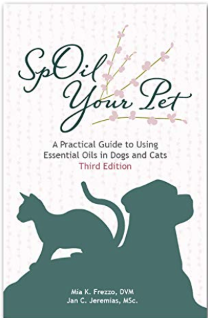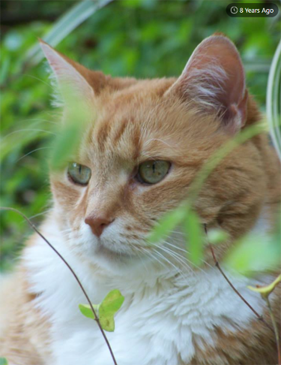SUBSCRIBE TO MY FREE ESSENTIAL OILS NEWSLETTER, "THE ESSENTIAL OILS Rx"
Are Essential Oils Safe for Dogs?
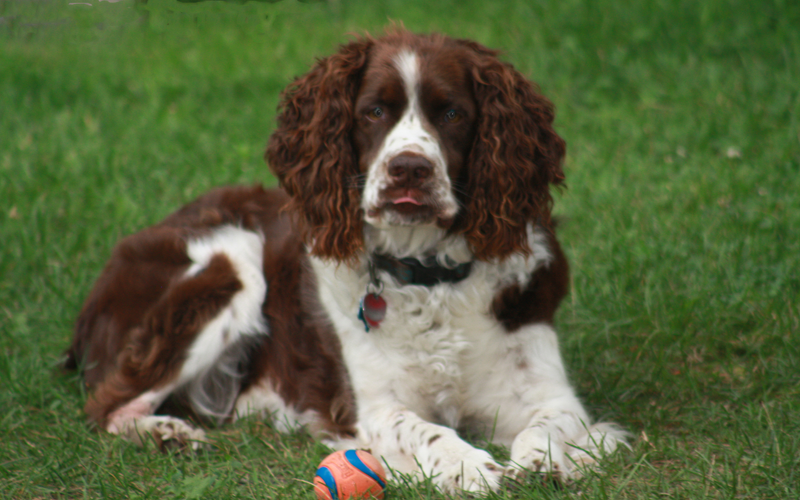 Murphy
MurphyEssential oils have some amazing health benefits for humans. But do they work for dogs as well? And are they safe to use around our furry friends?
If you look for answers to these questions on Google you’ll find many dire warnings about the dangers of using essential oils with dogs. Even veterinarians inexperienced in the use of essential oils often advise against using them with your pets.
I suspect that the adverse experiences and fear of using essential oils in dogs results from the same problem that I see with humans.
That is, many people are using essential oils that are adulterated. Adulterated oils can indeed cause problems in dogs – as well as in humans. And, unfortunately. about 80 per cent of the essential oils on the market today are adulterated – even those produced by major essential oil companies.
In addition, many essential oils that are labelled ”pure” actually contain extenders or other substances that are toxic to animals, while others have simply not been properly tested to be sure they don’t contain harmful contaminants.
So, if you haven’t done so, please read my articles on adulteration and sourcing and testing before investing in any essential oil or using them on or around your dog.
The Truth About Essential Oils and Dogs
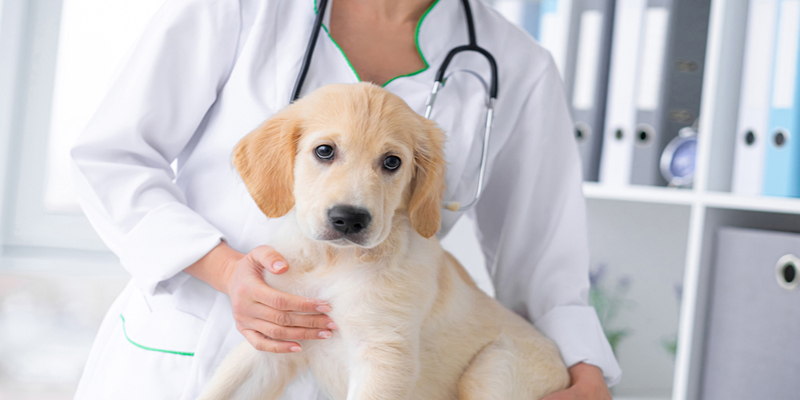
The truth is that, as long as you are using pure, unadulterated and properly tested (CPTG)
essential oils, these oils are not only safe but can be very
beneficial for your dogs.
According to Janet Rourke DVM , a veterinarian who uses essential oils extensively in her practice. . .
“Essential oils have emotional as well as physical benefits for your pets. They can help with calming, soothing, immune boosting, uplifting, focus, and the overall health and wellness of your 4-legged family members…I use essential oils every day with my dogs."
If you visit Dr Roark’s website you can download her free guide “Essential Oils and Safety for Pets.”
The guide is excellent – and full of useful information on the safe use of essential oils in dogs, as well as in cats, birds, horses, cattle, goats – even amphibians, reptiles and fish! I have highlighted some of the main points of this guide in this article.
Another Essential Oil Vet
Another vet who uses essential oils extensively in dogs (and cats) is Mia Frezzo DVM, author of the book “SpOIL Your Pet: A Practical Guide to Using Essential Oils in Dogs and Cats”. In the preface to her book DrFrezzo states. . .
“I feel proud to incorporate essential oils into my veterinary practice. I am entrusted with the health, well-being and happiness of my patients and I feel confident achieving those goals using pure essential oils.”
Dr Frezzo’s book is full of advice on how to use essential oils with dogs (and cats) and includes multiple essential oil recipes for the treatment of everything from allergies and arthritis to repelling ticks and managing minor trauma.
How to Safely Use Essential Oils With Your Dog
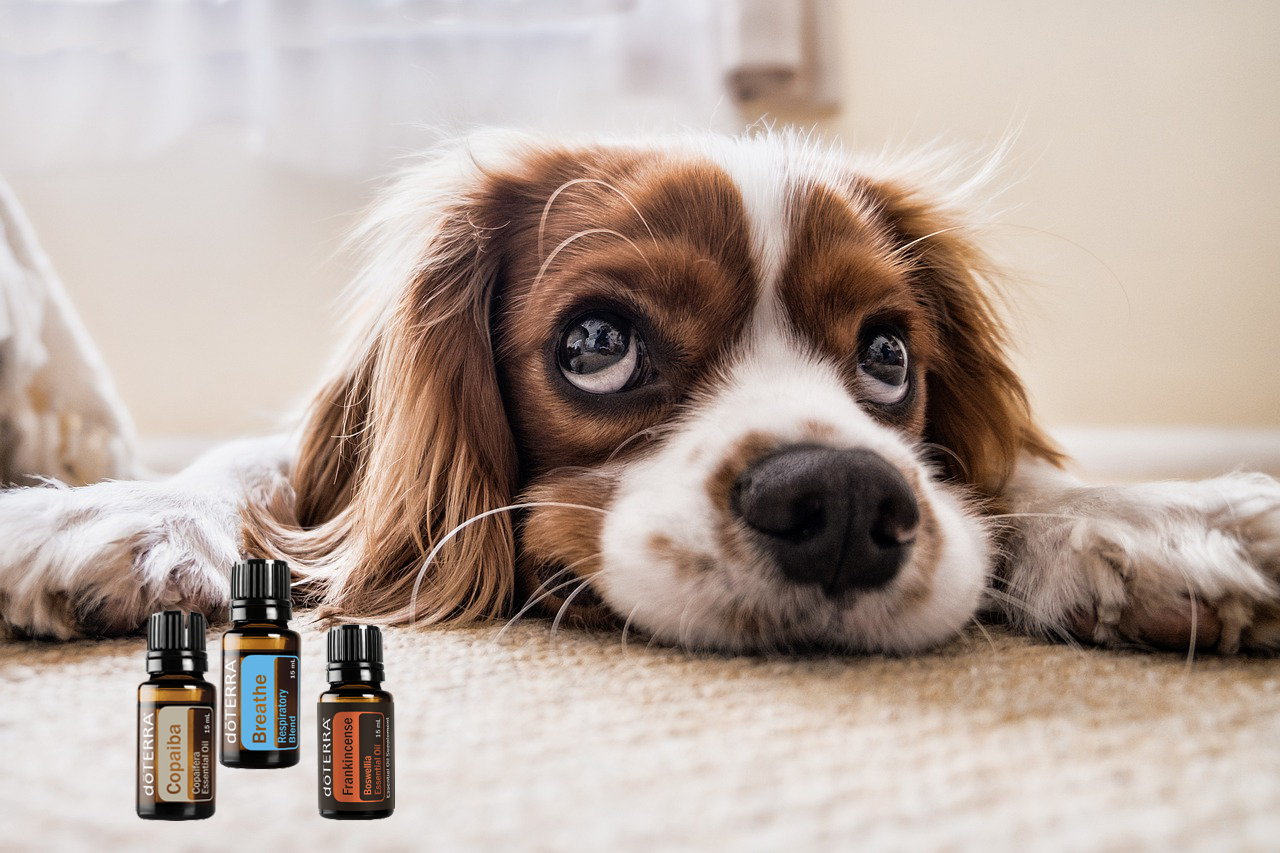
.Atlhough essential oils can be very beneficial for dogs there are a few safety recommendations you’ll want to observe. The following recommendations are taken from Dr. Rorak guide, “Essential Oils and Safety for Pets” and from Dr. Mia Frezzo’s book “SpOIL your Pet”.
The first recommendation for the safe use of essential oils with your
dog is to start slow.
Remember that dogs have a sense of smell many times greater than our own. So strong scents may put them off.
In addition, different dogs have different sensitivities – just as people do. When introducing a new essential oil to your dog, allow them to first sniff a closed bottle or small amount of diluted essential oil and then observe their behavior.
If your pet reacts negatively to a particular oil, don’t use it.
Methods of Administering Essential Oils to Your Dog
As with humans essential oils can be diffused, applied topically and. in some cases, even given internally to dogs. Here are some recommendations for the safe use of essential oils when using them in each of these ways.
Diffusion
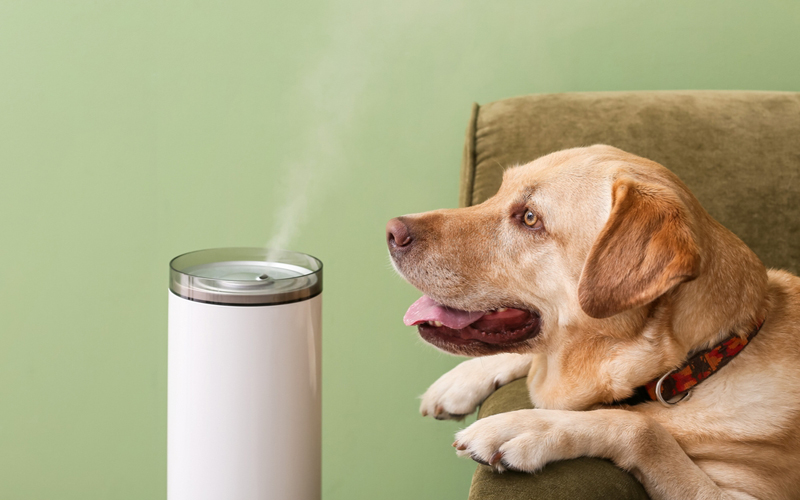
Essential oils can be administered aromatically by diffusing them: A diffuser breaks the essential oil into very small particles which then enter the air and are inhaled.
There are two basic types of diffusers – water diffusers and nebulizing diffusers.
When diffusing essential oils for pets, Dr Roark advises using only water diffusers. To use these diffusers you first fill the diffuser with water and then add a few drops of essential oil to the water. The diffuser will then disperse both essential oil particules and moisture into the air.
A water diffuser allows you to easily adjust the concentration of the oil you are diffusing by simply adding more or less essential oil to the diffuser. It also allows you to diffuse two or more essential oils simultaneously.
Nebulizer diffusers release essential oils particles directly into the air without the use of water. If you own a nebulizer diffuser and would like to use that with your pet Dr. Frezzo suggests starting with the lowest setting on the dial.
Keep in mind that, although diffusion is a very safe way of administering essential oils, inhalation provides a direct route to the bloodstream via the capillaries in the lungs. So, start with just a few drops of the essential oil in water and watch the reaction of your pet. If he responds positively you can then add a few more drops the next time you diffuse that particular oil.
Dr Frezzo suggests diffusing a new essential oil for 10 minutes while observing the behavior of your dog. If your dog exhibits lethargy, increased breathing rate, panting, salivating, squinting or any other change you consider out of the ordinary, turn off the diffuser and open windows and doors to air out the space.
Also, when diffusing oils be sure your dog can remove himself from the area if he chooses to do so. And remember: Essential oils should never be heated or burned. Heating or burning an essential oil will destroy the therapeutic properties of that oil.
Safely Diffusing Essential Oils With Dogs
Diffuse a new essential oil for 10 minutes while observing the behavior of your dog. If your dog exhibits lethargy, increased breathing rate, panting, salivating, squinting or any other change you consider out of the ordinary, turn off the diffuser and open windows and doors to air out the space. Also, make sure your dog can remove himself from the area if he chooses to do so.
Topical Use of Essential Oils in Dogs
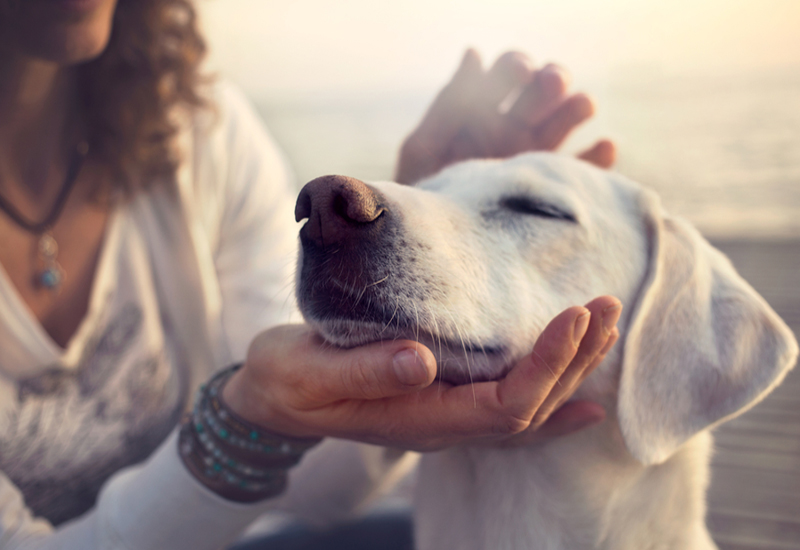
Essential oils consist of very small fat-soluble molecules that are readily absorbed through the skin. As a result they can be very effective when applied topically.
You can apply essential oils directly to the site of a problem, or simply apply them to your pet’s fur.
To do the latter, DR Frezzo recommends placing 1-2 drops into your hand, gently rubbing your hands together and then petting your dog along their neck or back. Some dogs may also appreciate having the oils applied to their belly.
Remember: It is more effective to use smaller doses more frequently than to apply too many drops at once: 1-2 drops is usually sufficient. Dr Frezzo recommends not exceeding 4 drops at one time.
Diluting Essential Oils

Although you may be able to apply some oils to larger dogs without first diluting them, for smaller dogs and when first introducing an essential oil to a larger dog, you will want to dilute them.
Dr Roarke recommends using a 0.5% dilution for dogs weighing 20 pounds or less and any time you are using a hot oil such as cassia, cinnamon, clove, melaleuca, oregano and thyme regardless of the dog’s size or weight. For gentler oils in larger dogs Dr Roarke recommends using a 3% dilution, although. Dr Frezzo, uses many CPTG oils on larger dogs without dilution.
If your pet does develop a skin irritation from an essential oil, don’t panic. According to Dr Roark, flushing the area with a carrier oil and exposing your pet to fresh air will resolve most skin irritations within 24 hours.
To learn how to dilute essential oils to achieve a specific concentration see my page, how to dilute essential oils.
Oral Administration of Essential Oils to Dogs
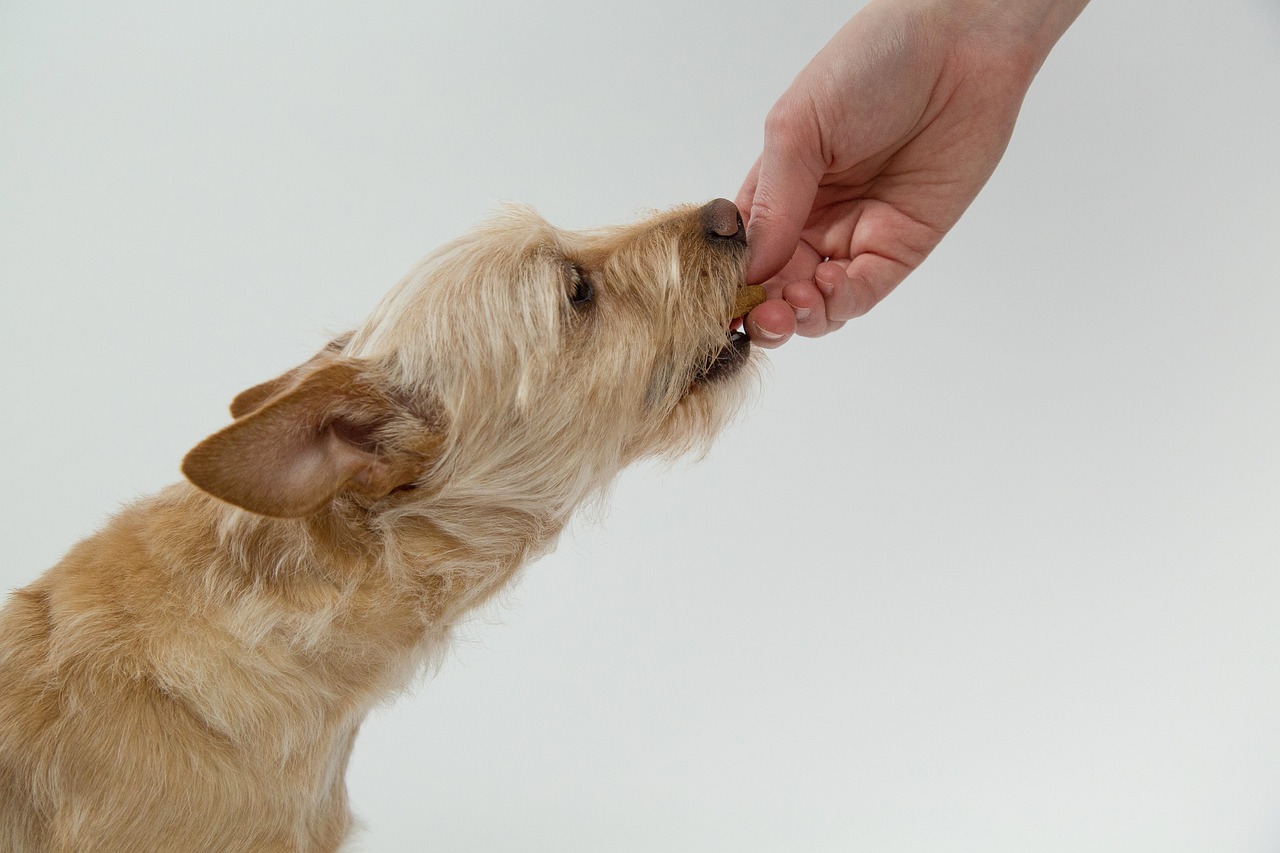
Many of doTERRA's oils are safe to ingest and, in some instances, you may want to administer them to your dog this way. Oils that are safe to ingest are labelled with an “I” on the company website.
To administer an essential oil orally to a dog, place the recommended amount of the oil in a vege capsule or simply place a drop or two on wet food or in the dog’s water.
TIP: To give capsules to a dog, try wrapping it in a small amount of cream cheese. The dog will usually take the resulting cream cheese/medication ball without complaint!
TIP
To give capsules to a dog, try wrapping it in a small amount of cream cheese. The dog will usually take the resulting cream cheese/medication ball without complaint!
Please consult with a vet familiar with essential oils before administering them orally to your pet.
Which Essential Oils are Safe to Use In Dogs
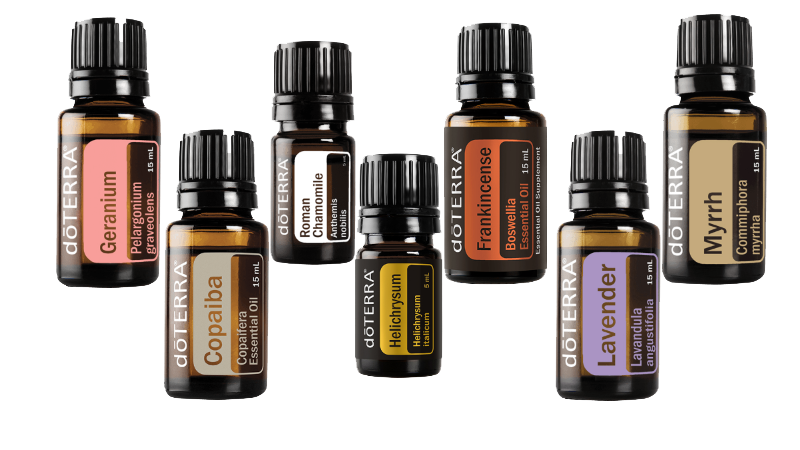
When used properly most of doTERRA's essential oils are safe for dogs. However there are a handful of oils you to want to use with caution - or avoid all together.
These include the hot oils: tea tree oil (Melaleuca), cinnamon, cassia, oregano, rosemary. clove and thyme. If you do choose to use these oils topically you want to be sure to dilute them – regardless of the size of your dog.
For internal use be sure you use only oils that carry an “I” designation, meaning they can be safely ingested. Always follow the directions of a veterninarn experienced in the use of essential oil when using oils this way.
Special Considerations

For pregnant, nursing, and young animals avoid Arborvitae, Basil, Birch and Wintergreen as well as the hot oils such as Cassia, Cinnamon, Rosemary, Thyme, and Wintergreen.
Mint is known to decrease milk production so use Peppermint sparingly near end of pregnancy and while breast feeding. Again, its wise to consult an experienced vet when using essential oils in these animals.
For dogs with seizure disorders you want to avoid Basil, Black pepper, Camphor, Eucalyptus, Fennel, Hyssop, Sage, Rosemary and Wintergreen since these oils may lower the seizure threshold.
For dogs with bleeding disorders avoid topical application of Birch, Cassia, Cinnamon, Clove, Fennel, Oregano, Wintergreen and Blue Tansy. (Diffusing these oils should be OK.)
When treating an animal with a bleeding disorder for pain, Dr. Frezzo recommends using Aroma Touch (massage blend), Helichrysm, Geranium or Lavender rather than Deep Blue (soothing blend) which contains Blue Tansy and Wintergreen.
For treating infections she recommends Myrrh, Helichrysm, Frankincense and Lavender instead of Oregano. And to support digestive issues in animals with bleeding disorders she uses Lavender and Myhhr rather than Digestzen (digestive blend).
More Safety Tips for Using Essential Oils with Dogs

There are a few other general safety tips for using essential oils with dogs.
1. Never apply essential oils in your pet’s nose, ears, eyes, genital or anal region. If you do get oils in a sensitive areas flush the area immediately with an carrier oil like fractionated coconut oil or organic olive oil. Never use water to try to wash out or dilute an essential oil.
2. Store your oils safely.Keep your essential oils tightly capped and store them in a cool, dark, place out of the reach of your pets.
3. Place your diffuser properly. When diffusing oils be sure your diffuser is in a place where it wont be knocked over by a wagging tail or a bump to a table.
4. Watch for signs of distress. Discontinue use of an oil if your pet shows signs of distress such as drooling, squinting, rubbing their face, vocalization, shaking, vomiting, or diarrhea. Seek veterinary attention if these symptoms are significant or persist.
Next in the Series on Safe Use of Essential Oils. . .
Safe Use of Essential Oils with Cats. I doubt that there is any topic involving the use of essential oils that has generated more fear – and misinformation – than using essential oils with cats.
The truth is that essential oils can actually be very good for cats. But there are a few precautions. To learn how to safely use essential oils with your cat click on this link.

Want to try doTERRA essential oils or essential oil products?
Click on this link to get a FREE membership and WHOLESALE prices for a full year! Get My Free doTERRA Membership.
